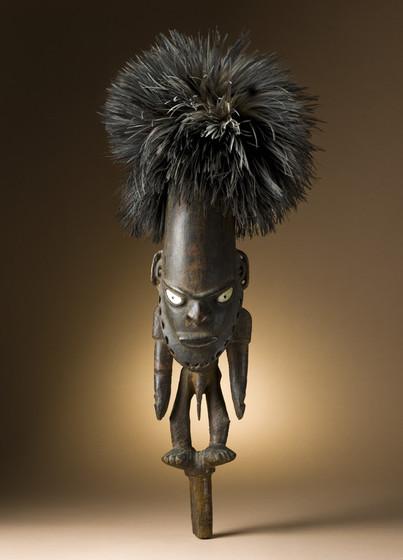This elaborately decorated figural carving was used to plug the end of a Biwat flute. The plug was inserted into the mouthpiece of the long ceremonial flute, which would have been six to eight feet in length. The figure’s large head and smaller body is a representation of the ancestral crocodile spirit’s child. The carving has lost its painted surface, however the inlaid eyes and a cassowary bird feather headpiece are still in place. Though now lost, the figure also would have had a thick hair or shell beard, a shell or tusk piece in the septum of the nose, and ornaments of shell and fibers hanging from the large forehead and body. These additional adornments allowed only the eyes, nose, and mouth to be visible.
Flutes of this type were made in pairs and not played often. Initially used in a completion ceremony, they were stored as sacred objects until needed for rituals. Generally used in initiation ceremonies for young men, the flutes were hidden from the view of women, and sometimes given as part of a woman’s dowry.
Flute Ornament is on view in the Art of the Pacific galleries in the Ahmanson Building.



